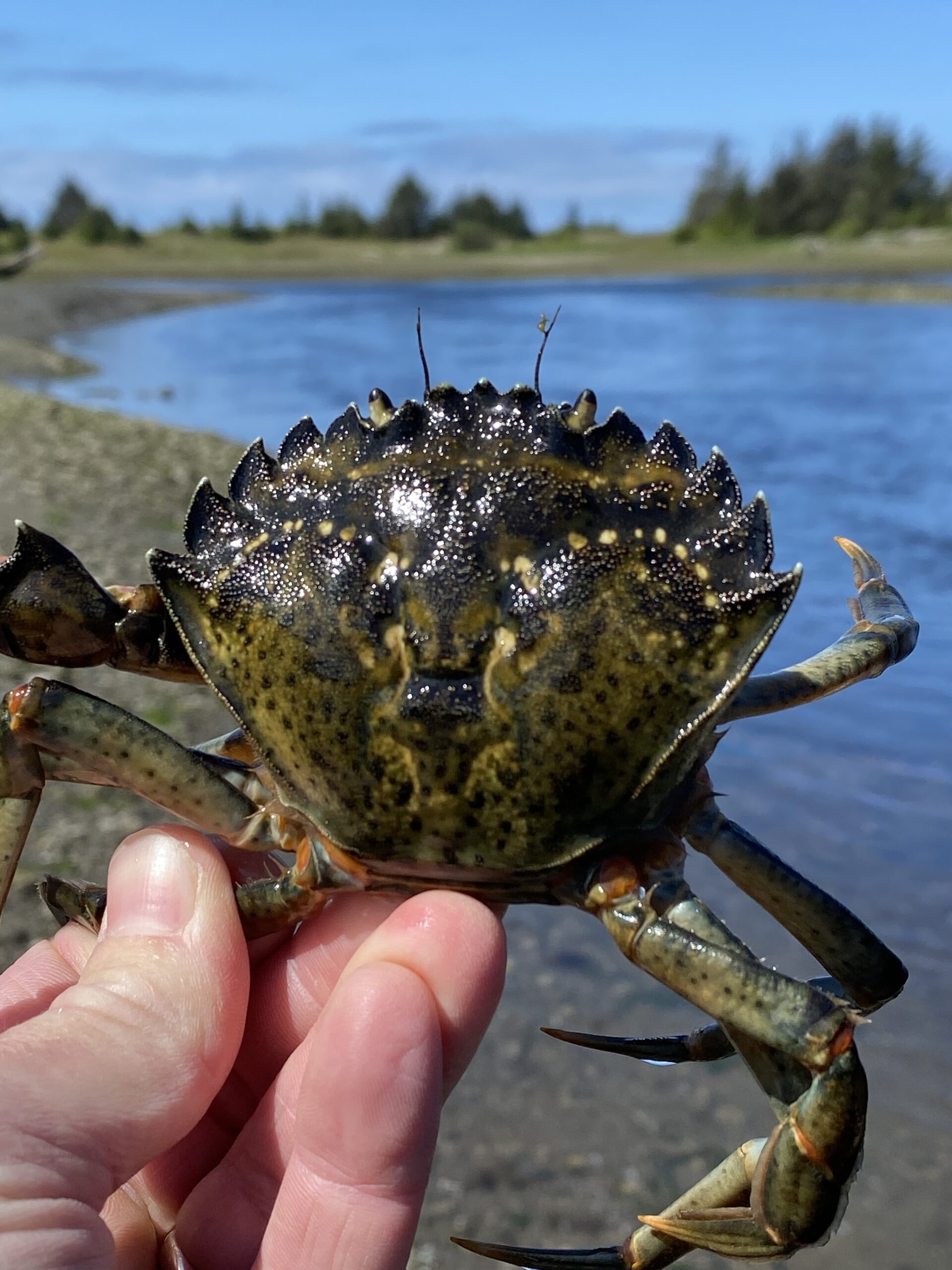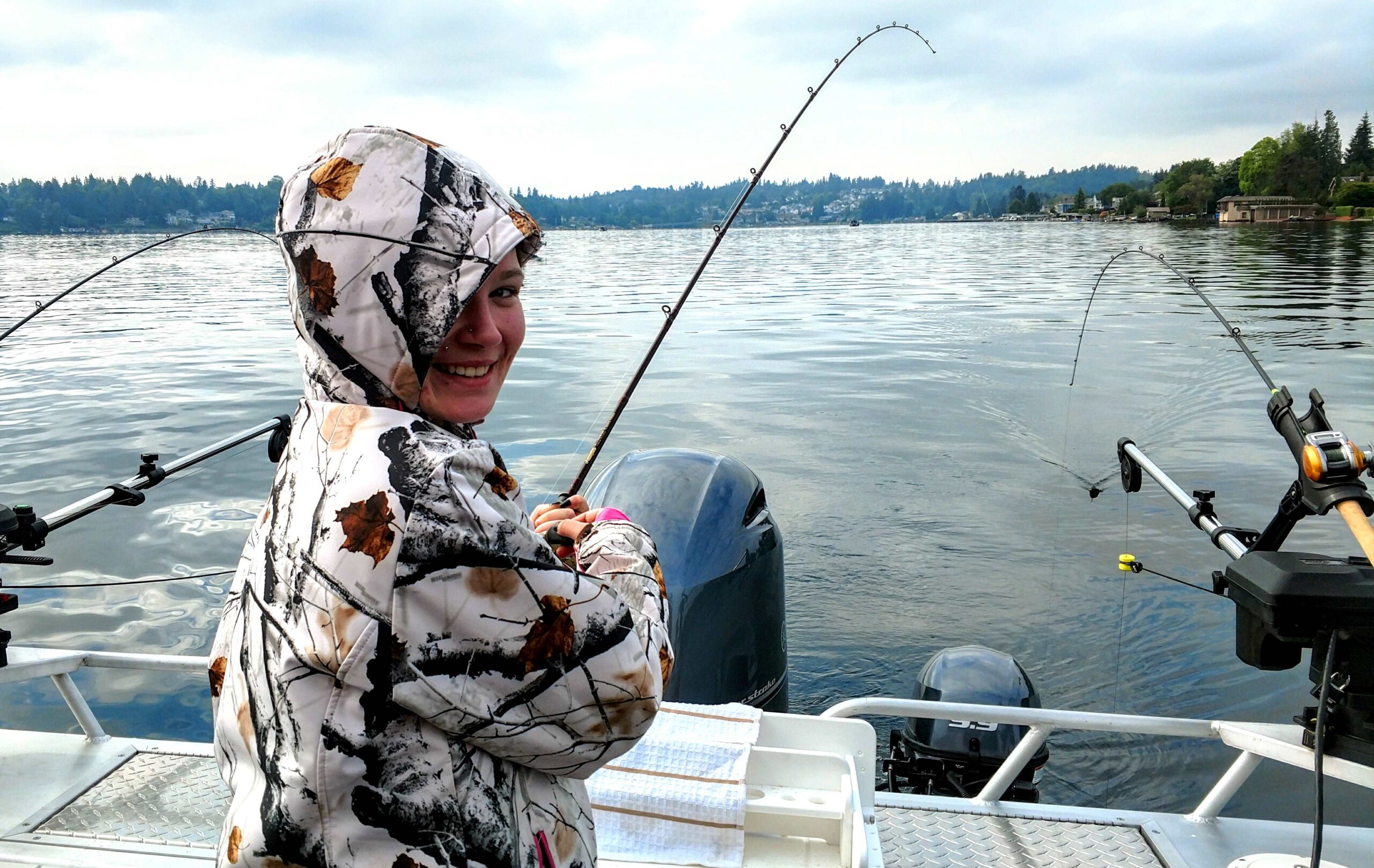(Crappie and Bluegill Technique and Set Up)
Fishing for Crappie and Bluegill, often referred to as panfish, provides both novice and seasoned anglers with an exciting challenge and a delicious reward. These popular freshwater species can be found in lakes, rivers, and ponds across Washington State, making them accessible targets for anglers of all skill levels. So grab your tackle box, and join me as we explore the effective techniques and setups tailored specifically for crappie and bluegill fishing.
Understanding Crappie and Bluegill
Crappie:
Crappie are highly sought after for this tasty white meat and can grow to impressive sizes with the white Crappie and the black Crappie being the most common species. They are known for their tendency to school around submerged structures such as trees, brush piles, and docks. If fishing from the boat, I’m typically a fan of casting small jigs, and bobbers around these structures searching for bites – and also using my electronics to tell me – what’s below, and what are they schooled around? With fishing docks, I begin by jigging shallow and work my way deeper until I feel that “thump!” Usually, they are just suspended a few feet off the bottom below the docks, but at certain times of the day, they are just a foot below the docks, and hugging the boats making it a little tougher shooting your jig under them, trying not to spook em’.
Bluegill:
Bluegill is smaller than crappie but just as popular among anglers. They are characterized by their distinctive blue gill covers and can be found hanging out in shallow waters, around vegetation, and structures submerged in water. Bluegill are prolific breeders and often travel in schools, during their spawn, they will have a minefield of beds in the shallows as they become very aggressive in protecting their eggs. It’s very fun targeting these, especially practicing catch and release. For many of us, the Bluegill was the first fish caught as a kid that sparked the interest.
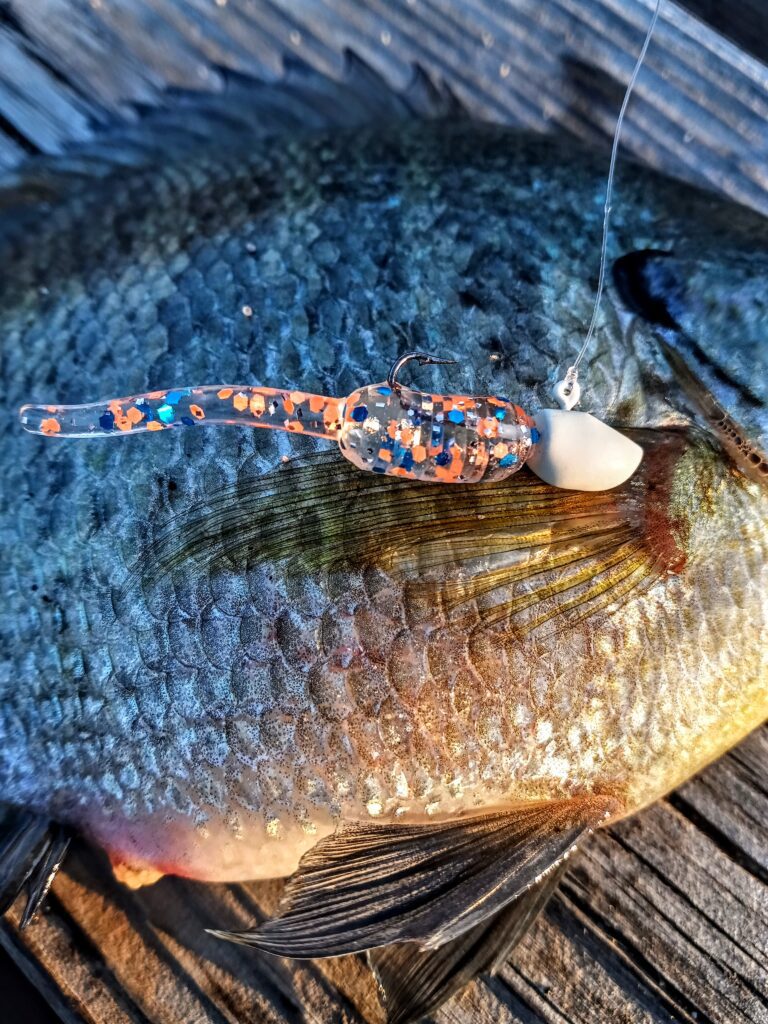
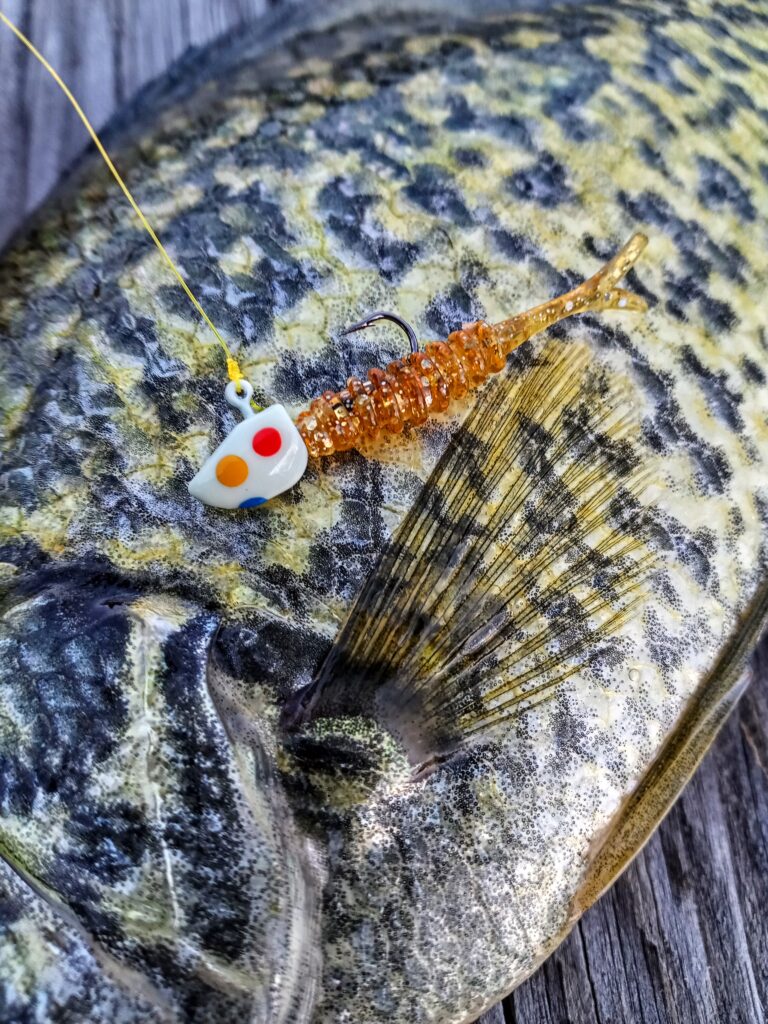
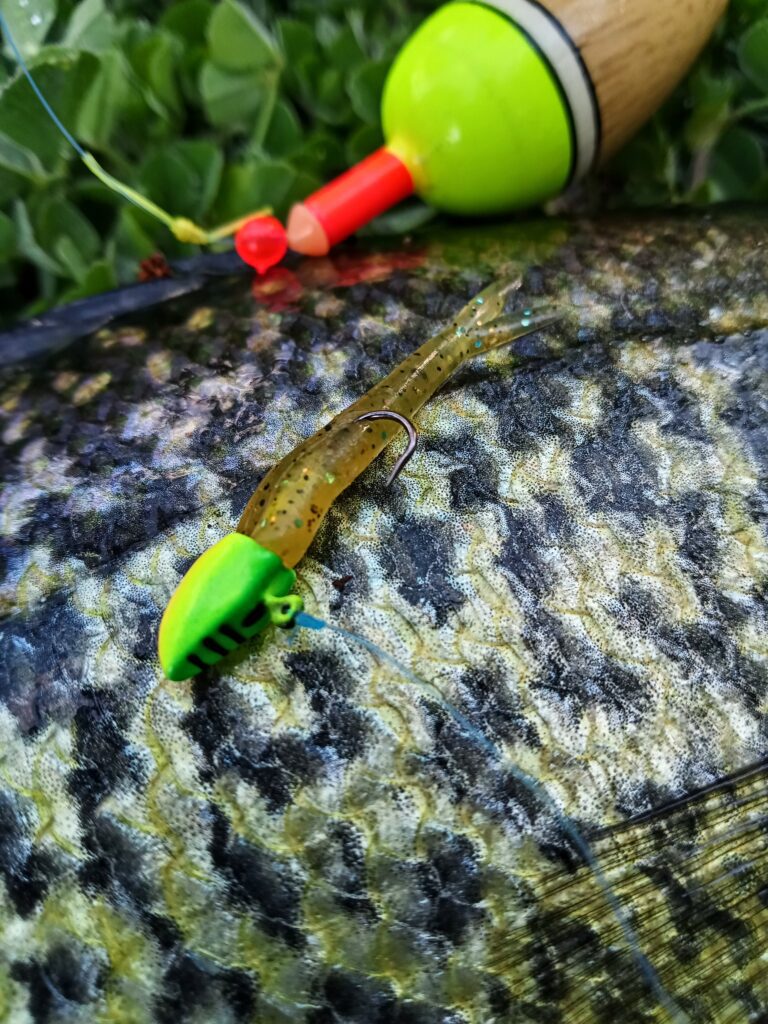

Essential Equipment:
Rod and Reel:
For panfish, a light or ultra-light spinning rod and reel combo works best. This setup allows for casting bobbers and small baits accurately and provides the sensitivity needed to detect subtle bites.
Fishing Line:
Use light line, monofilament, or fluorocarbon. Typically in the 4-8lb range, as lighter lines allow for a better presentation of small baits and lures while maintaining enough strength to handle larger fish, I often choose monofilament in the 4-6lb test to allow a little stretch with my hook set, especially fishing crappie with their paper-thin mouths. (Hence the name “Lantern-mouths.”)
Terminal Tackle:
Small hooks such as a number of 6-10 for bluegill, and slightly larger for crappie 4-8, tipped with worms is the most simple way to approach these fish. Split shot weights and bobbers are another effective way to locate fish and to find the depth to adjust your bait too, keeping it in the strike zone.
Baits and Lures:
Though we can’t use live bait, the most effective bait for both bluegill and crappie is a worm. Cured crickets and minnows work well, but you may have to work your bait more to attract the fish. When it comes to working your baits, we typically refer to artificial baits such as jigs, small crankbaits, spinners, and soft plastics like grubs. Soft plastics come in so many profiles, that you can define the bite with a minnow profile, to a buggy pattern.
Techniques For Crappie:
Vertical Jigging:
Drop a jig or your vertical presentation down near submerged structures, trees, and docks, areas where Crappie are likely to congregate. Use either slow retrieves after casting with an occasional twitch, or gentle jigging motions to act like a wounded, or swimming minnow to entice bites.
Fan Casting Bobbers:
Cast small bobbers around structure docks, brush piles, and/or just outside of major weedlines. I try to have at least 3 rods rigged up with my favorite bobbers, each at different lengths below the bobber to find the depth at the fish are suspended. Anywhere from 2-4 ft below the bobber is a good starting point. When you find the depth, stick to it, and if the bite dies down, continue to move until you get back to the school.
Dock Shooting:
Perfect for targeting Crappie hiding under docks. With a light jig or worm under a float, skip the bait under the docks and other overhead cover where Crappie lurk. I have a ton of success using this technique when I find the Crappie are sucked close to the bottom of boats in a marina.
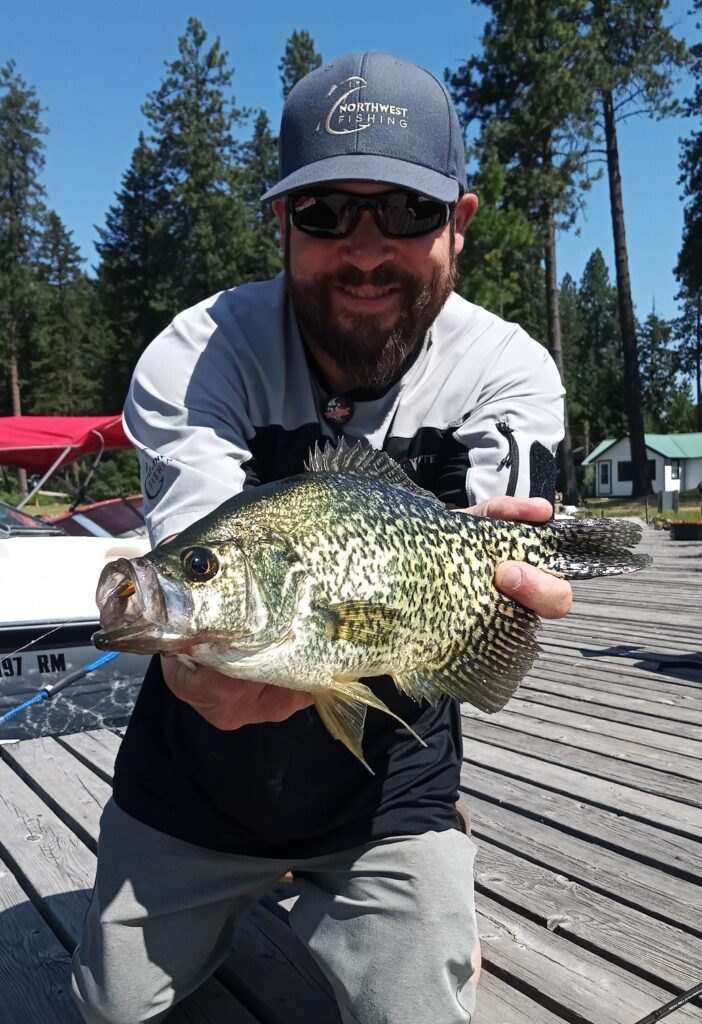
Techniques For Bluegill:
Bobber Fishing:
Attach the small hook baited with the worm, and/or your favorite micro jig and plastic under the bobber and cast towards shoreline vegetation and those submerged structures. Slipping that bait even a foot or less directly under your float as you reel across the tops of their beds. Being able to adjust your float to the depth of the bait to find where the Bluegill are feeding is important.
Micro Jigging:
Very similar to jigging for crappie but with much smaller jigs and hooks, again casting and retrieving slowly varying the speed to find the most effective presentation, and jigging vertically with different cadences until you find what they want.
Micro Crankbait:
Yes, cranking for Bluegills. We have found much success fishing Micro Crank Baits such as the Z-Cranker from Eurotackle. Trolling right outside the weedlines adjacent from their beds, and they will smoke them baits as they are very aggressive during their spawn.
Tips For Success:
Location:
Use electronics and maps if possible to locate submerged structures, such as weed beds, drop-offs, brush piles, and sunken trees, where Crappies and Bluegills gather.
Time Of Day:
Early morning and late evening are prime times for Panfish, as they are active and feed in those low light conditions. We do find them of course throughout the day, but tend to have the hottest bites early and later.
Patience And Observation:
Panfish can be finicky. Be patient and pay attention to subtle bites or changes in bait behavior. They may want a micro Tungsten jig one morning, and the next they want a larger jigging spoon. Feeding habits can change by the hour too, so don’t be afraid to even try beaded head flies.
Catch And Release:
Practice selective harvest and release larger breeding fish to sustain a healthy population. I always release any Bluegill over 9in, and release the majority of Crappie over 12in. Very rarely do I keep fish, but every now and then they are a good fish fry. (Please check regulations on your lake’s fishing)
Fishing for Crappies and Bluegill is not just about catching fish; it’s about enjoying the outdoors and honing your skills, whether you prefer the challenge of targeting Crappies with jigs or the simplicity of bobber fishing for Bluegill, there’s a technique that suits every anglers style. With the right equipment, techniques, and a bit of patience, you’ll be well on your way to filling your cooler with these delectable freshwater treasures.
By mastering the techniques and setups, you’ll enhance your Pan Fishing experience and increase your chances of success on your next fishing adventure. “I hope to see you out on the water!” – Eric Magnuson.







